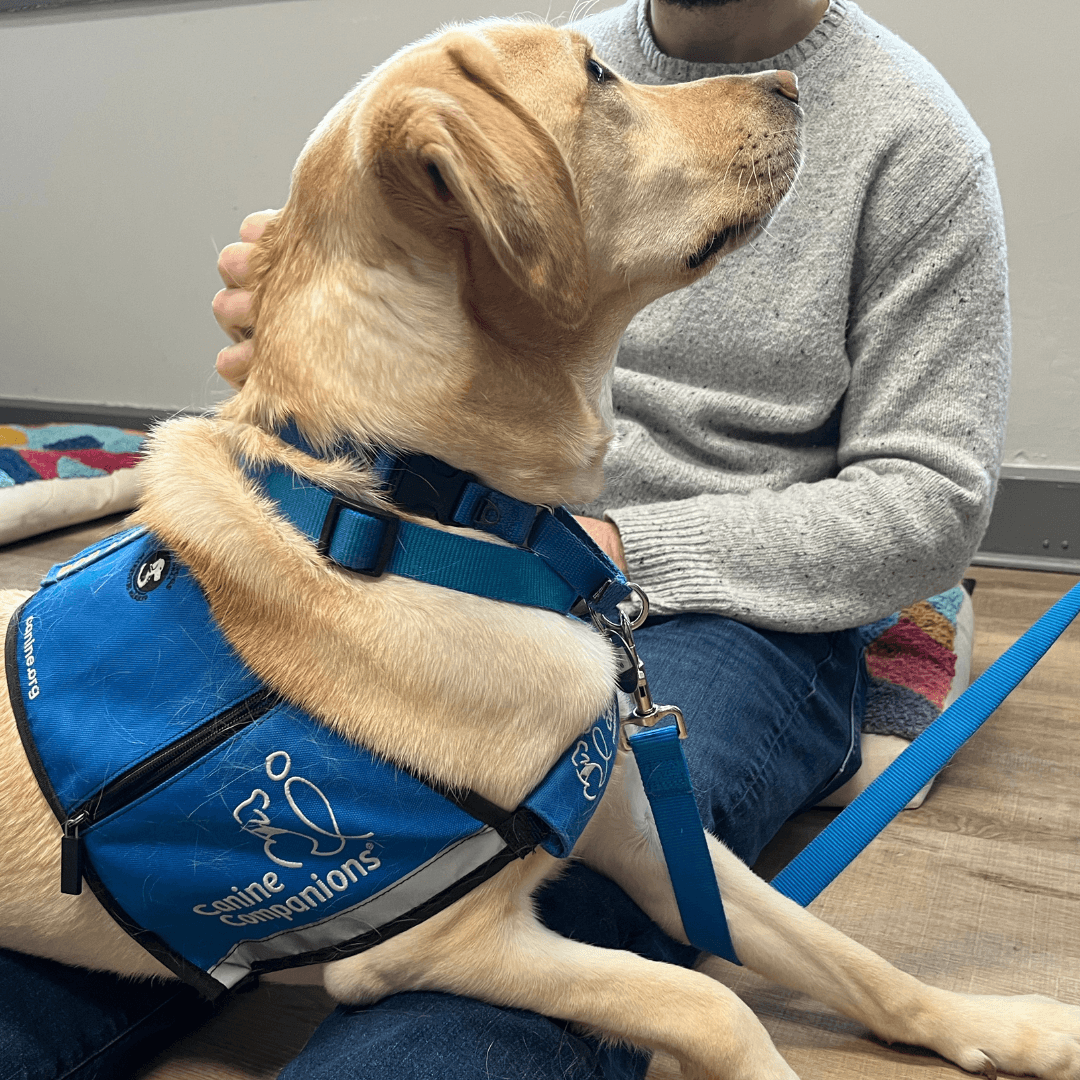
For the first time in Ohio, families experiencing the trauma of homelessness can receive therapeutic support from a four-legged companion.
Columbus-area nonprofit Home for Families is the first housing organization of its kind in the state – and one of only a few in the entire country – that has received a facility dog from Canine Companions to reduce the trauma associated with experiencing homelessness.
Tatum, a 2.5-year-old Labrador/Golden Retriever Cross, provides therapeutic comfort and support to housing clients and their children, offering anxiety relief, motivation, and unconditional love. Expertly trained and provided to Home for Families at no cost by fellow nonprofit Canine Companions, Tatum can perform over 40 cues designed to motivate and support clients through their housing crises.
“Clients deserve respect and support, and Tatum is just another way that Home for Families is trying to maximize the care for the people we work with,” said Sarah Singletary, Director of Housing for Pregnant Women at Home for Families and one of Tatum’s two handlers.
Home for Families began working with Tatum this past fall, after she graduated from her facility dog training program with Canine Companions. Her integration into Home for Families’ trauma-informed case management programming began in December.
Tatum is the result of HFF's innovative, client-centric trauma-informed care practices. She interacts with clients with the help of her two Home for Families handlers, one of whom is always present with her when she works with clients and their families. Tatum's handlers voluntarily agreed to their roles, and while there are opportunities to support Tatum in her role, which help offset general program costs associated with running the organization’s homelessness prevention programs, the addition of Tatum does not divert critical funding away from clients or any essential programs
In her role, Tatum can serve clients from all housing programs. Her training from Canine Companions enables her to provide specialized, trauma-informed care to families fatigued by the relentless challenges associated with housing instability.
Singletary said clients visibly relax as soon as they start interacting with Tatum.
“They open up more about what is going on and the areas they want to work on with their case managers,” she said. “It’s encouraging to see the smiles that Tatum brings to both adults and children around her, even during stressful situations.”
Often, Tatum is able to provide stress relief for clients just by being near them. She also can carry out specific cues, such as resting her head on a client’s lap or shaking her paw to “meet” clients and their families. Tatum also can play games, such as rolling a ball back and forth, to keep children occupied while parents are concentrating or discussing difficult topics with their case managers.
“She is so calm and gentle with children of all ages and provides a great distraction (and a few slobbery kisses) while parents are working with their case manager,” Singletary said. “It’s encouraging to see children’s faces light up playing with her during client meetings, since Tatum is helping to brighten a tough situation.”
Tatum also helps alleviate the toll that secondary trauma often takes on the organization’s case managers and program directors.
Kate Kozsey, Director of Home for Families’ Family Stabilization & Aftercare Programs, used to finish up her work day at home following client interactions that felt particularly heavy. Now, she’s able to schedule brief de-stressing sessions with Tatum to immediately follow her client meetings.
“I feel like from head to toe, the stress just melts away,” she said.

